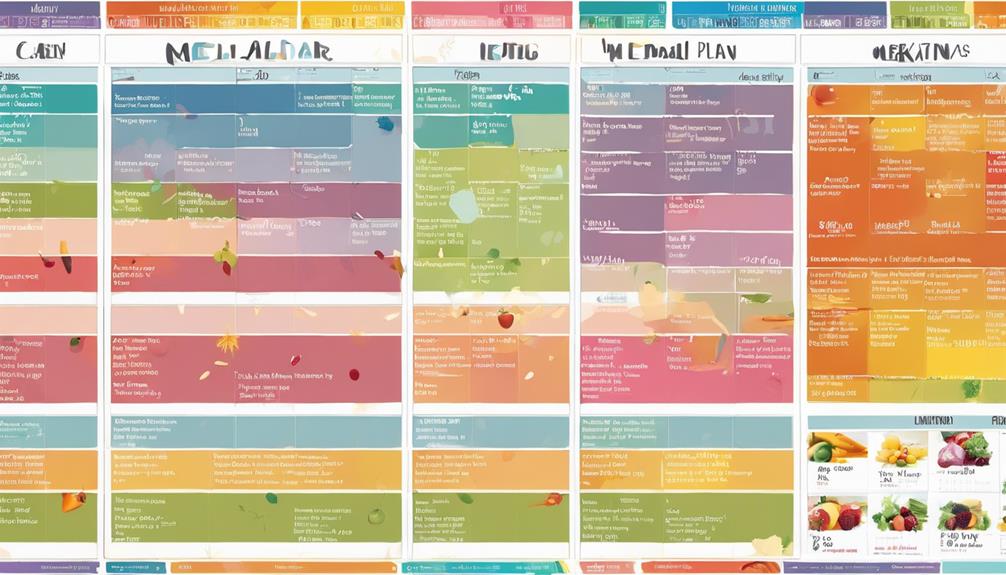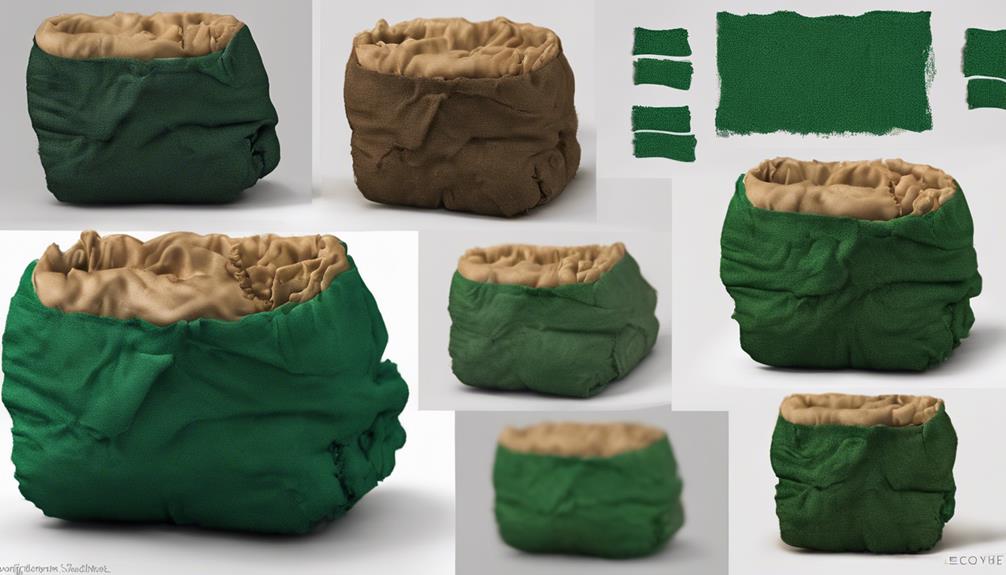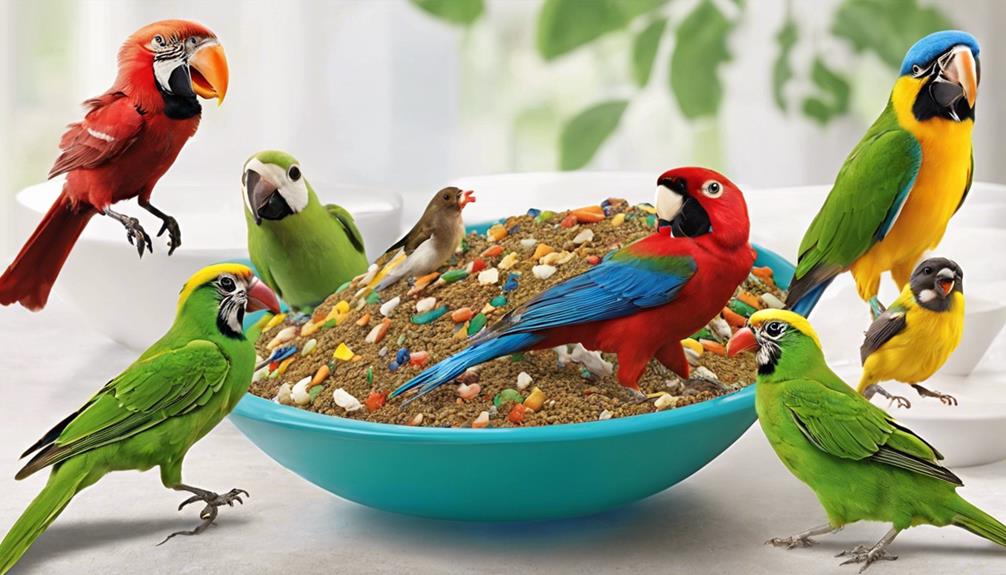When maneuvering the intricate dance of balancing a dairy-free diet for successful breastfeeding, we find ourselves juggling the nutritional needs of both mother and baby.
From deciphering labels to discovering hidden sources of dairy, the journey can be a challenging yet rewarding one.
Join us as we unravel the complexities of maintaining a dairy-free lifestyle while nourishing your little one, exploring the delicate equilibrium between dietary restrictions and best breastfeeding outcomes.
Key Takeaways
- Essential nutrients like calcium and healthy fats are crucial for successful dairy-free breastfeeding.
- Alternative sources such as fortified plant-based milks and nuts provide necessary nutrients.
- Proper meal planning and supplements are essential for maintaining a balanced dairy-free diet.
- Managing challenges like dairy intolerance symptoms in infants requires consultation with healthcare providers.
Essential Nutrients for Dairy-Free Breastfeeding
When starting on a dairy-free breastfeeding journey, it's essential to prioritize obtaining key nutrients like calcium, protein, and healthy fats from alternative sources to support both the parent and the baby's nutritional needs.
While dairy is a traditional source of calcium, fortified plant-based milks, leafy greens like kale and broccoli, as well as nuts and seeds such as almonds and chia seeds, can provide adequate calcium for breastfeeding moms on a dairy-free diet.
Protein is important for both the parent and baby during breastfeeding, and options like beans, lentils, tofu, and quinoa offer excellent dairy-free protein sources.
For healthy fats essential for brain development and energy, avocado, nuts, seeds, and olive oil are fantastic choices for dairy-free breastfeeding parents. These fats are essential for the overall well-being of both the parent and the little one.
Meal Planning for Dairy-Free Moms

To effectively support the nutritional needs of dairy-free breastfeeding moms, meal planning plays an essential role in making sure a well-rounded diet rich in essential nutrients. When creating a dairy-free meal plan, it's important to focus on calcium-rich alternatives such as fortified plant-based milks, white beans, broccoli, and cabbage. Including calcium supplements and sources of vitamin D is also important for maintaining bone health while following a dairy-free diet during breastfeeding.
Reading labels diligently to avoid hidden dairy ingredients in processed foods is key for successful dairy-free meal planning. A sample meal plan for dairy-free moms could include fortified breakfast cereal with oat milk, a sandwich made with fortified bread and tinned salmon, grilled chicken with mashed potatoes prepared with fortified milk, and almonds as a snack.
Proper meal prep and planning ensure a balanced and varied dairy-free diet, helping to prevent potential nutrient gaps.
Dairy Alternatives for Breastfeeding Success
Plant-based milk alternatives fortified with essential nutrients are valuable additions to a breastfeeding mother's diet for utmost health and lactation success. These dairy substitutes not only provide calcium important for the baby's bone development but also cater to various tastes and preferences. Below is a comparison table of some popular plant-based milks and dairy-free cheese that can enrich your breastfeeding diet:
| Plant-Based Milk | Taste & Texture | Usage |
|---|---|---|
| Oat Milk | Creamy, Mild | Coffee, Baking |
| Almond Milk | Nutty, Light | Cereal, Smoothies |
| Coconut Milk | Rich, Coconutty | Curries, Desserts |
| Dairy-Free Cheese | Various flavors | Sandwiches, Pasta |
Incorporating these fortified plant-based milks and dairy-free cheeses can help meet your calcium intake requirements without dairy products. Additionally, for those with food allergies or sensitivities, these alternatives offer a safe and nutritious solution to support both you and your baby's health during this important breastfeeding period.
Managing Dairy-Free Challenges

After exploring dairy alternatives for breastfeeding success, it's important to address the challenges that may arise when managing a dairy-free diet during this critical period. Recognizing dairy intolerance symptoms in infants, such as colic or eczema, is essential as it may necessitate a dairy elimination diet for the breastfeeding mother. Additionally, certain foods in the maternal diet, like spicy or gas-producing ones, can impact breastfeeding comfort for both the mother and baby. Seeking guidance from a healthcare provider is vital to address colic symptoms through appropriate maternal dietary changes.
Furthermore, it's important to understand that breast milk flavor can vary based on the mother's diet, and infants often exhibit preferences for sweet and savory tastes. This highlights the importance of understanding how a dairy-free diet can influence the flavors present in breast milk. When faced with dairy-free challenges during breastfeeding, reaching out to healthcare providers and lactation consultants for support and guidance can be immensely beneficial in handling these obstacles effectively.
Recipes for Dairy-Free Breastfeeding
Incorporating nutrient-rich ingredients into dairy-free recipes is essential for breastfeeding parents looking to maintain a balanced and healthy diet while nourishing their baby.
When creating dairy-free recipes, consider including plant-based milk alternatives, such as almond or coconut milk, to provide essential nutrients without dairy.
Enhance the nutritional value of your meals by incorporating ingredients like chia seeds, which are rich in omega-3 fatty acids, or flaxseeds and leafy greens packed with vitamins and minerals.
A dairy-free smoothie with berries, spinach, and your preferred dairy alternative can serve as a convenient and nutritious option for busy parents.
Homemade dairy-free energy balls made with dates, nuts, and seeds can offer a satisfying snack to keep your energy levels up throughout the day.
Additionally, dairy-free soups prepared with a variety of vegetables, beans, and herbs can provide a comforting and nourishing meal option for breastfeeding parents.
Frequently Asked Questions
How Long Does It Take for Dairy-Free Diet to Work Breastfeeding?
It usually takes 2-4 weeks for a dairy-free diet to show results while breastfeeding. Babies may see improvements in symptoms like eczema, reflux, or colic within days to a week. It's important to stay consistent and seek advice from healthcare providers.
Will Cutting Out Dairy Help My Breastfed Baby?
Cutting out dairy may benefit your breastfed baby if there are signs of cows milk protein intolerance. Consulting a healthcare provider is essential for guidance. Monitoring your baby's response to the dairy-free diet can help determine its effectiveness.
What to Avoid on a Dairy-Free Diet While Breastfeeding?
Wondering what to avoid on a dairy-free diet while breastfeeding? We skip cow's milk and hidden sources like lactose-free products that still contain milk protein. Let's read labels and consult experts for safe choices.
How Long Does It Take to Flush Dairy Out of Breastmilk?
It typically takes up to 2 weeks for dairy proteins to fully leave breastmilk. However, this timeline varies. Babies may still react to traces post-elimination. Patience is key. Seek guidance from healthcare providers or lactation consultants for tailored advice.
Conclusion
As we journey through the delicate balance of a dairy-free diet while breastfeeding, let's remember that we're like skilled tightrope walkers, gracefully managing the challenges and triumphs that come our way.
By focusing on essential nutrients, meal planning, dairy alternatives, and seeking support when needed, we can confidently embrace this journey with strength and resilience.
Together, we can nourish ourselves and our little ones, creating a beautiful tapestry of health and well-being.









